
Journal Menu
► ▼ Journal Menu-
- Energies Home
- Aims & Scope
- Editorial Board
- Reviewer Board
- Topical Advisory Panel
- Instructions for Authors
- Special Issues
- Topics
- Sections & Collections
- Article Processing Charge
- Indexing & Archiving
- Editor’s Choice Articles
- Most Cited & Viewed
- Journal Statistics
- Journal History
- Journal Awards
- Society Collaborations
- Conferences
- Editorial Office
Journal Browser
► ▼ Journal BrowserNeed Help?
Meet the Editors
16 August 2021
Meet the Editors | Prof. Dr. Giovanni Esposito—Section Editor-in-Chief of “Hydrogen Energy” in Energies

I am currently a Professor of Sanitary and Environmental Engineering at the University of Napoli Federico II. In 2004, I was awarded a Ph.D. in Hydraulic and Environmental Engineering from the same University, for which 1 year was conducted at the University of Wageningen in the Netherlands. From 2004 to 2018, I worked at the University of Cassino and Southern Lazio, where I established my lab and research group of several Ph.D. students and post-doc fellows, funded by the European Commission. I have supervised more than 30 Ph.D. and 70 MSc students. Both at the University of Napoli Federico II and at the University of Cassino and Southern Lazio, I was responsible for several courses in the environmental technology field and am the member of several boards and committees.
2. What attracted you to science editing?I think that science editing is a very important part of academic work. Although it is time consuming, I believe that high-quality science editing results in a high-quality journal, and I believe that only top journals, such as Energies, should be targeted for publishing.
3. What advice would you offer to a new editor of a journal?My advice to new editors is to commit themselves to this activity and contribute to selecting the top papers to be published by carefully pre-checking the submissions and selecting the most suited reviewers.
4. Energies is an open access journal. How do you think open access impacts authors?I think that the impact of open access is very high, and it will further increase in future. I believe that in the coming years, open access will become the main publishing model, replacing the traditional subscription model.
5. To which research fields do you think we should be paying more attention?I think that all research fields linked to the United Nations 17 Sustainable Development Goals (SDGs) deserve to be paid maximum attention.
6. What has been your biggest challenge and greatest achievement in your career so far?My biggest challenge and greatest achievement has been the coordination, from 2009 to 2019, of two International Doctorates funded by the European Commission, i.e., the “Marie Curie” European Joint Doctorate in Advanced Biological Waste to Energy Technologies (ABWET) and the “Erasmus Mundus” international Joint Doctorate in Environmental Technologies for Contaminated Solids, Soils and Sediments (funding of €5,500,000 and €4,000,000, respectively), with 62 doctoral candidates involved.
7. How do you achieve a balance between research policy and practice in the various professional communities?To achieve a balance between the different academic and professional activities is really challenging. I believe that this is possible when one is part of an active and efficient working group, and this happens to be the case with me at the University of Napoli Federico II.
28 July 2021
Meet the Editors | Prof. Dr. Maria Founti—Section Editor-in-Chief of “Energy and Combustion Science” in Energies
Short Biography

Prof. Dr. Maria Founti is a Professor in the School of Mechanical Engineering of the National Technical University of Athens and Director of the Laboratory of Heterogeneous Mixtures and Combustion Systems. She holds a B.Sc. degree in Nuclear Engineering from the University of London, MSc. and D.I.C. in Heat Transfer Engineering, and Ph.D. in Combustion Technology from Imperial College London. She has worked as Research Associate at the Chair of Fluid Mechanics of the FAU Erlangen-Nuremberg, Germany. Her current interests focus on energy savings and storage in buildings combined with advanced energy systems and materials, combustion systems and processes and heterogeneous mixtures, fire engineering and compartment fires, multi-criteria assessment, and Life Cycle Analysis for techno-economic, social, and environmental impact of energy systems. She has 250 publications in international journals and conferences. She has participated in and coordinated 40 funded research projects.
Q&A
1. How did you become involved with Energies?
I was at first invited to act as a Guest Editor of an Energies Special Issue on “Energy Efficiency, Savings, and Storage in Buildings Combined with Advanced Energy Systems and Materials”. I liked the potential of bringing together different disciplines to create “win-win” cases for energy efficiency. It seems that several colleagues embrace this approach, and as a result, I decided to continue.
2. What impact do you hope that the journal will have in terms of the energy field?
The research topics of Energies are very close to the interests of the research community. I hope that the “Energy and Combustion Science” Section can contribute to the current transition towards the energy system decarbonization by shedding new knowledge on how our experience from the operating combustion systems can be “updated” and transferred to new systems for the benefit of society and the environment.
3. Who will be your main readers? Who should contribute to the journal, and what can the readers expect?
I would like to provide an opportunity for readers from diverse backgrounds to read high-quality and innovative papers. These can be young or experienced scientists, engineers or researchers working on combustion, or related applications and energy topics. The readers can expect to find new cross-sectoral ideas being developed and validated in peer-reviewed articles. Contributions can address basic thermo-chemical phenomena, technology development, engineering applications, and their techno-economic and environmental assessment.
28 July 2021
Meet the Editors | Prof. Dr. Marco Marengo—Section Editor-in-Chief of “Thermal Management” in Energies
Short Biography
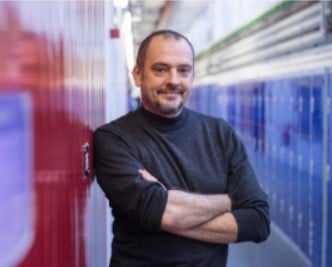
Prof. Dr. Marco Marengo received a Master’s Degree in Physics cum laude at the University of Turin on Dynamical Systems. He got a Ph.D. in Energetics at the Polytechnic of Milan with a thesis about “Drop Impingement on Liquid Film”. Since 2009 he has been European Editor of the international journal Atomization and Sprays, Editorial Board member of Heat Pipe Science and Technology and other international journals. He is involved in one Topical Team of the European Space Agency, he is leading the ESA PHP scientific team, he is active in ESA parabolic campaigns. He has founded two spin-off companies and he has been involved in more than 30 industrial contracts. He has published more than 300 scientific papers, among which more than 60 in peer-reviewed international journals about liquid sprays, drop impact on solid, dry, and wetted surfaces, heat pipes, building physics.
Q&A
1. How did you become involved with Energies?
I have held the role of Editor-in-Chief for the journal Atomization and Sprays for 9 years, and I genuinely enjoy this kind of work. It put me in a position where I can always be in contact with the latest results in the field, and I am obliged to leave my comfort zone of only reading papers close to my research expertise. Moreover, I feel as though I am a part of the scientific community with a particular commitment to increasing the quality of papers and the impact of our research. Since I have experience with standard publishers, I was looking for a publisher dedicated to open access. My doubt at that time was that the review process for an open access journal was less strict due to a possible conflict of interest between having to publish more papers in order to increase income and the quality of the papers. Indeed, I was glad to verify that the quality of reviews was not far from what I experienced with other journals.
2. What impact do you hope that the journal will have in terms of the energy field?
Energies is one of the most recognized journals in the field at the moment. With a high number of sections and the continuous commitment to proposing Special Issues, it can become one of the leading journals in the field of energy production, energy processes, and in more fundamental topics such as heat transfer, fluid dynamics, and so on. What is now necessary, due to the increase in incoming papers, is to raise the bar to maintain the same number of published papers, but with an improved selection.
3. Who will be your main readers, who should contribute to the journal, and what can the readers expect?
The readers of Energies are the scholars working in related fields; however, due to the particularly high number of papers devoted to technologies, I think that applied scientists and researchers in companies are also reading the papers due to the open access nature of the publication. I believe that most of the readers are from the engineering sector; however, there may also be interest from chemists and physicists. The colleagues who are submitting papers to Energies are attracted by the high Impact Factor and the rapidity of the review process. Maintaining a high journal Impact Factor is a key issue for me as Editor-in-Chief of the journal.
26 July 2021
Meet the Editors | Interview with Dr. Fernando Rubiera González—Section Editor-in-Chief of “Bio-Energy” in Energies
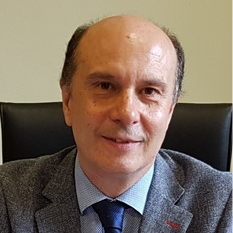
My research career has been mainly focused on the reduction of pollutant emissions. These investigations covered sulfur dioxide and nitric oxides released from power plants, as well as the minimization of carbon dioxide emissions to the atmosphere by different carbon capture technologies that include oxycombustion and swing adsorption processes such as PSA, TSA, and combinations, PTSA, VTSA. At the same time, the co-utilization of coal and biomass was also a must and, in the last years, biomass has fully covered my research efforts. When one takes into account both terms, biomass utilization and carbon capture, the concept of negative emissions of CO2 come about and it is becoming clear that both biomass and carbon capture will have to play an important role in the objective of reducing carbon emissions to the point of zero in 2050. Moreover, the aim should be to remove additional carbon dioxide from the atmosphere, direct air capture, beyond the net zero. In this regard, my current research interests are directed towards processes that involve the utilization of biomass mainly in reforming and gasification processes, the production of green hydrogen from biomass, and the capture of CO2 by adsorption with solid sorbents. An example of these research areas is my investigation into the sorption enhanced steam reforming (and gasification) of biogas, bio-oil, and solid biomass for the production of hydrogen. This also involves a CO2 capture step in the whole process.
2. How do you see the journal developing now that you are part of Energies? What are your current and future plans for the journal?Since the first issue of Energies showed just five articles, the efforts and improvements that have been implemented have been enormous. This is now reflected in the last issue, July 2021, with more than 350 articles. In this regard, it is fair to acknowledge the great work that has been done and continues to be done by both editors and reviewers. If the journal wants not only to maintain but to increase its quality, it must, first of all, take care of its reviewers and editors. The “Bio-Energy” section should contribute to maintaining and improving the impact of the journal. Energies is currently in the first quartile of the CiteScore in “Control and Optimization”. Even so, one of the main objectives that we must aim for is to place the magazine among the most cited in its category.
3. Will you try to extend the journal’s international appeal? If so, how?As far as I know, the articles published in Energies come from a vast variety of countries worldwide. It will be difficult to extend this appeal to more countries. The first thing will be to achieve a greater impact of the journal that makes it more attractive so that scientists want to publish their most recent and most outstanding results. Additionally, it will be necessary to increase the publicity of the advantages of publishing in Energies, among which are a quick evaluation process and its open access model that enables everyone to access the articles.
4. What are the qualities that you look for in an article, and how do you maintain quality?When I review an article, I do not look at its length. I stray from wordy and cumbersome articles. A direct introduction with adequate references to the subject already gives an idea of the quality that you can expect from the paper. Furthermore, not only the text but also the tables and figures should clarify the ideas behind the article. The most important thing, nonetheless, is to find a sound discussion of the results. All this together already gives a first view of the quality of an article. Finally, it is important to find reviewers who are experts on the subject and who can provide suggestions to the authors in order to improve or clarify some aspects of the article.
13 July 2021
Meet the Editors | Interview with Prof. Dr. José Matas—Section Editor-in-Chief of “Smart Grids and Microgrids” in Energies
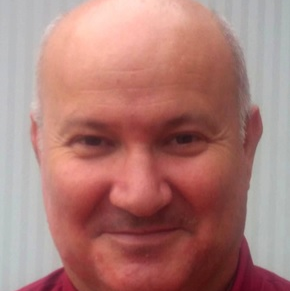
Section: “Smart Grids and Microgrids”
Editor-in-Chief: Prof. Dr. José Matas
Affiliation: Electric Engineering Department, Barcelona East School of Engineering (EEBE), Polytechnic University of Catalonia (UPC), Barcelona, Spain
1. What is your background and what expertise do you bring to Energies?Engineering has become a multidisciplinary area that requires a great amount of knowledge about different parts of science, including physics, chemistry, industry, environmentalism, etc. So, becoming an engineer is a highly challenging task that requires a lot of passion and curiosity about science and life itself. You always ask yourself about the mechanism that is behind the scenes of all possible solutions, and you ask yourself if there are other, better ways to solve the problem. This is my case and I believe it is something deep within the souls of engineers. I had been passionate about electronics, digital signal processors, power electronics, control of power electronics, renewables, microgrids, and now electrical engineering in general. At the start of my career, I worked as a product engineer for various electronics companies. Moreover, after joining the university with an academic-oriented activity, I was free, for the first time, to explore many aspects of technology that amaze me. I never imagined, even in my wildest dreams, that I was going to participate in such a high number of innovations. It makes life worth living and gives you a spiritual meaning and a purpose. Therefore, what I bring to the journal is not specific. It is a wide-ranging knowledge acquired through the course of my life. I have discovered that this happens for many engineers who have realized that they have chosen the same path to fulfill an inner, deep curiosity about how things work.
2. In your work as a Section Editor-in-Chief, what do you find especially rewarding?I must confess that the offer of this role was a surprise to me in the beginning, because, like many other scientists, I was devoted to my endeavors. Soon, I discovered that it was offering me insight into the many exotic areas of research related to renewable energy, microgrids, and smart grids. I must confess that for me, it has been a special gift. An opportunity to participate, somehow, in the discussion of ideas, of new concepts, and the design challenges that many researchers are doing just now, trying to imagine what we can do to create a better means of generating, distributing, and efficiently sharing the energy needed in the future. Furthermore, it is rewarding to be able to contribute to the process of ensuring the quality of the journal, helping to resolve review conflicts related to the works submitted for revision. We should recognize the extraordinary efforts of the researchers who contribute to the journal and help them as much as possible in this regard, by facilitating the publication process.
3. What does Energies’ vision for open science mean to you?I have found that Energies has a good policy regarding open publication. The quality of the journal and the published papers is high. Open access is a means of giving visibility to research and offering it to the global community fast and free. This is only possible today, due to the incredible communication capabilities that we now have. Moreover, Energies is not just a journal. It carries out other activities, like offering publication discounts, free publications to chosen scholars, organizing conferences, and so on. It has a good and increasing impact factor that is now about three, which I am proud of. The journal is drawing more attention and consideration in the research community. However, this does not mean that everything is done. I know that this journal is open to new ideas and suggestions. I believe that soon, we will see new ways of creating a research community for journals.
4. What developments are occurring in Energies or your field of expertise that excites you at this time?Energies is a journal that traditionally dealt with only “energy”, and everything related to it. Now, it considers the rest of the technologies that convert energy to electricity and distribute it to modern society. This includes several topical collections—twenty-seven overall—which honestly is a lot. These collections deal with wide and popular topics like “Electrical Power and Energy Systems”, “Sustainable Energy”, or “Artificial Intelligence and Smart Energy”. They are all really interesting, but what motivates me more are those topics related to “Energy Conversion”, “Smart Grids”, “Microgrids”, “Renewable Energy”, and “Electric Vehicles”.
5. What is a fun fact about you?Well… Everybody has something fun about themselves; that’s part of being human. The fact is that my wife smiles and laughs a lot when she sees me start moving my foot in the supermarket when they play ambient music that I like. It is surreal and I do not know why I do that. However, at that moment, and with her, I do not feel any shame about it, as I have been a very sensitive person my whole life.
13 July 2021
Meet the Editors | Interview with Prof. Dr. Ruud Weijermars—Section Editor-in-Chief of “Geo-Energy” in Energies
Section: “Geo-Energy”
Editor-in-Chief: Prof. Dr. Ruud Weijermars

My principal research interests are in petroleum engineering. Recently, we have developed new tools and methods to quantify and visualize (1) fluid flow in porous media, and (2) propagation of hydraulic fractures. Prior to joining KFUPM in 2021, I worked at Texas A&M University and the Bureau of Economic Geology, UT Texas at Austin—and I was a postdoc at ETH Zurich in the late 1980s.
2. What led you to become Section Editor-in-Chief of “Geo-Energy”?After having been an author and reviewer for Energies, I was asked to consider becoming Section Editor-in-Chief. This is an important task to help further improve the quality of the journal and set direction. Geo-energy is a pre-eminent field of research because we need to make the transition to renewables while sustaining our planet's environment in the quest for affordable and secure energy supplies.
3. What advice would you offer to a new editor of a journal?Make sure the submissions fit within the scope of the journal. The impact factor needs to go up so that Energies becomes a Q2 or even Q1 journal. Keeping the subject focus and limiting the content to high-quality papers are key to achieving that goal.
4. In terms of the research you publish, what are you on the lookout for, and what would attract authors to want to publish in Energies?Original work presented in an efficient, concise format is what we are looking for. We have some surprisingly good works submitted and that work can be published fast. But there is also still some less impressive work. The poorer papers put a high burden on editors and reviewers, but these are chores we have to accept and perform diligently.
5. Which Energies paper for you has been the most significant, or is simply your favorite?The quality of Energies papers is steadily rising, and there are many excellent papers. My hope is the impact factor will get another boost soon, thanks to more and more high-profile authors publishing in Energies.
13 July 2021
Meet the Editors | Interview with Dr. Umberto Berardi—Section Editor-in-Chief of "Smart Cities and Urban Management" in Energies
Dr. Umberto Berardi (uberardi@ryerson.ca)
1. How did you become involved with Energies?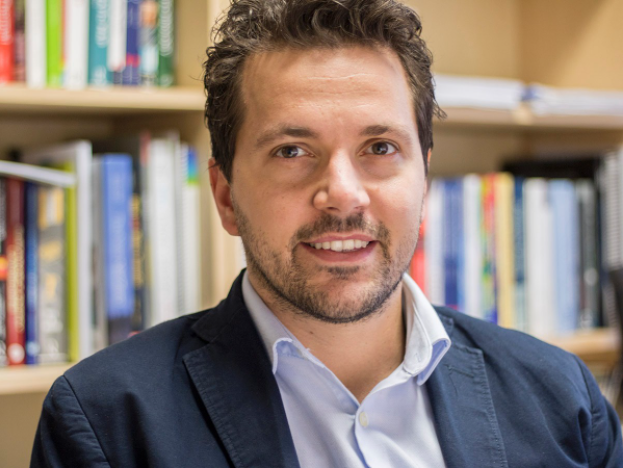
I firstly published a few papers in this journal and was extremely happy with the experience and support. I soon after started acting as a reviewer and, again, the experience was greatly positive. So, when the MDPI-Energies staff approached me to discuss possible new topics to engage with together at a new level—that of leading a new section of the journal— we had a good discussion and I think, in the end, we had found a critical gap, one which we hope to fill with this new Section.
2. What impact do you hope that the journal will have in terms of the energy field?We aim to connect the communities of researchers (and readers) from the energy and the urban sciences fields. This will mean understanding the critical role that energy can and must play in a future smart sustainable city. In this sense, the journal, thanks to its fast review process, high quality, and broader audience, can provide the place to go for those looking for regular updates about novel experiences and results.
3. Who will be your main readers? Who should contribute to the journal, and what can readers expect?We hope to attract a diverse readership. Energy engineers will traditionally turn to us, but computer scientists, data analysts, urban planners, architects, and geographers are some of the other communities that we hope will be interested in reading the articles we publish.
13 July 2021
Meet the Editors | Interview with Prof. Patrick Phelan—Section Editor-in-Chief of "Energy and Buildings" in Energies
Prof. Patrick Phelan (phelan@asu.edu)
1. How did you become involved with Energies?
I was, of course, aware of the journal Energies from having seen and read a number of interesting articles. Then, I was pleasantly surprised when the Editorial team at Energies reached out to me one day and invited me to join their effort, specifically in the role of Section Editor-in-Chief for “Energy and Buildings”. After giving it some thought (admittedly not for very long!), I happily accepted the offer.
2. What impact do you hope that the journal will have in terms of the energy field?Energies is a journal where articles that do not fit neatly into other journals can appear. We have a very quick review process that is attractive for authors and that is, I think, not matched by any other journal in the energy field. This means that, in addition to a broad variety of articles covering all aspects of energy, we can become the "go-to" journal for rapid publication of important results. For comparison, consider the journals Applied Physics Letters or Nano Letters, both of which promote rapid publication albeit in (usually) a non-open-source publication format. Both of these have become leading, high-impact-factor journals in part because of their rapid review processes and, of course, because of the high quality of their content. The Editorial Board of Energies needs to continue to strive to maintain our rapid review process while maintaining and improving the scientific and engineering quality of our papers.
3. Who will be your main readers? Who should contribute to the journal, and what can readers expect from the journal?Our readers are energy researchers around the globe, including those in developing countries who may not have access to typical journals that charge readers for access. It is interesting to me that the majority of our authors appear to be outside of the USA and Western Europe. In addition to continuing to attract these authors, we need to strive towards connecting with the more traditional research centers in the USA and Western Europe. I think this is becoming more and more possible because publicly funded research is increasingly required to be published in open source journals for maximum accessibility. Readers can therefore expect not only open access papers, but also high-quality, recent research that impacts all energy sectors.
13 July 2021
Meet the Editors | Interview with Prof. Dr. Wei-Hsin Chen—Section Editor-in-Chief of "Artificial Intelligence and Smart Energy" in Energies
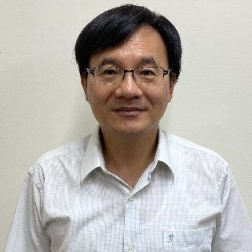
I am Prof. Dr. Wei-Hsin Chen, a Distinguished Professor at the Department of Aeronautics and Astronautics, National Cheng Kung University, Taiwan. My research topics include bioenergy, hydrogen energy, clean energy, energy system analysis, and atmospheric science for fuel and environmental sustainability. As the Section Editor-in-Chief of the "Artificial Intelligence and Smart Energy" Section, I am hoping to direct the overall strategy of this section by sustainably and efficiently reviewing and deciding upon the submitted manuscripts and ensuring that the manuscripts accepted are of high academic integrity and relevance to the global challenges as addressed by the Sustainable Development Goals (SDGs).
2. What will Energies have to offer that will make it stand out from other journals?With so many academic journals out there, deciding where to submit your manuscript is not an easy task. For Energies to stand out among other journals, two main factors to be considered will be the journal’s ranking and impact factor. It is in Q1 in the “Control and Optimization” research category and Q2 for “Energy (miscellaneous)”, “Energy Engineering and Power Technology”, “Fuel Technology”, “Renewable Energy”, “Sustainability and the Environment”, and “Electrical and Electronics Engineering” research categories. The lower the research quartile, the higher the journal in the top rankings.
3. Energy research has been going on for a long time—what breakthroughs have been made recently?Here are some of the research breakthroughs in energy research recently.
First, a breakthrough by researchers at UVA's College and Graduate School of Arts & Sciences, the California Institute of Technology, and the U.S. Department of Energy's Argonne National Laboratory, Lawrence Berkeley National Laboratory, and Brookhaven National Laboratory could eliminate a critical obstacle from the solar energy conversion technology, a discovery that represents a giant stride toward a clean-energy future. The new process involves creating active catalytic sites at the atomic level on the surface of titanium oxide nanocrystals, a technique that produces a durable catalytic material and one that is better at triggering the oxygen evolution reaction.
Second, the graphene aluminum-ion battery cells from the Brisbane-based Graphene Manufacturing Group (GMG) are claimed to charge up to 60 times faster than the best lithium-ion cells and hold three times the energy of the best aluminum-based cells. Based on breakthrough technology from the University of Queensland’s (UQ) Australian Institute for Bioengineering and Nanotechnology, the battery cells use nanotechnology to insert aluminum atoms inside tiny perforations in graphene planes.
Lastly, in their latest paper published in the journal Energy Storage, IIASA researcher Julian Hunt and colleagues explored one of the lesser-known but promising sustainable energy storage systems, namely Buoyancy Energy Storage Technology. Buoyancy Energy Storage Technology (BEST) can be particularly useful to store intermittent energy from offshore wind power plants, especially in coastal regions and small islands. As an added benefit, the same technology can be used to compress hydrogen and transport it underwater.
4. What are the trends of the future and advances to watch out for in this area?Most visible in the energy and climate space is the impact of AI and machine learning on how energy is supplied. That’s because more intelligent energy supply systems, in effect, shift the supply curves outward. They take resources that are hard to tap and lower the cost. For example, machine learning systems can improve the ability to map and understand the size and value of underground deposits of oil and gas—in turn, making it easier to tap those resources at a lower cost. The same logic applies not just to traditional hydrocarbons that make up the backbone of the world’s energy system but also to new non-hydrocarbon energy supply options. For example, AI-assisted training for the design and operation of wind and solar farms can make these systems much more efficient in how they take financial resources (i.e., capital) and generate electricity. In the case of wind farms, the turbine heads can be oriented actively to capture a greater fraction of the incoming wind—something that has been doable for a long time and can be made more efficient with machine learning. Similar learning can improve the quality of solar forecasting—for example, leading to better day-ahead and hour-ahead predictions of how clouds and other weather formations affect solar output. In turn, better forecasts can make it easier and more lucrative for solar generators to participate in electricity markets. At the moment, I sense that AI is having a bigger impact on oil and gas than in renewables because of the kinds of activities that are unlocking new hydrocarbon resources—notably the shale revolution in oil and gas which requires mapping complex underground reservoirs and tailoring drilling methods—are particularly well-suited to the recursive, complex learning processes that AI is well-suited to deliver.
5. What is on your reading list for the Energies community?(1) Faculty and students in universities
(2) Researchers in universities and institutes
(3) Governments and Policymakers



